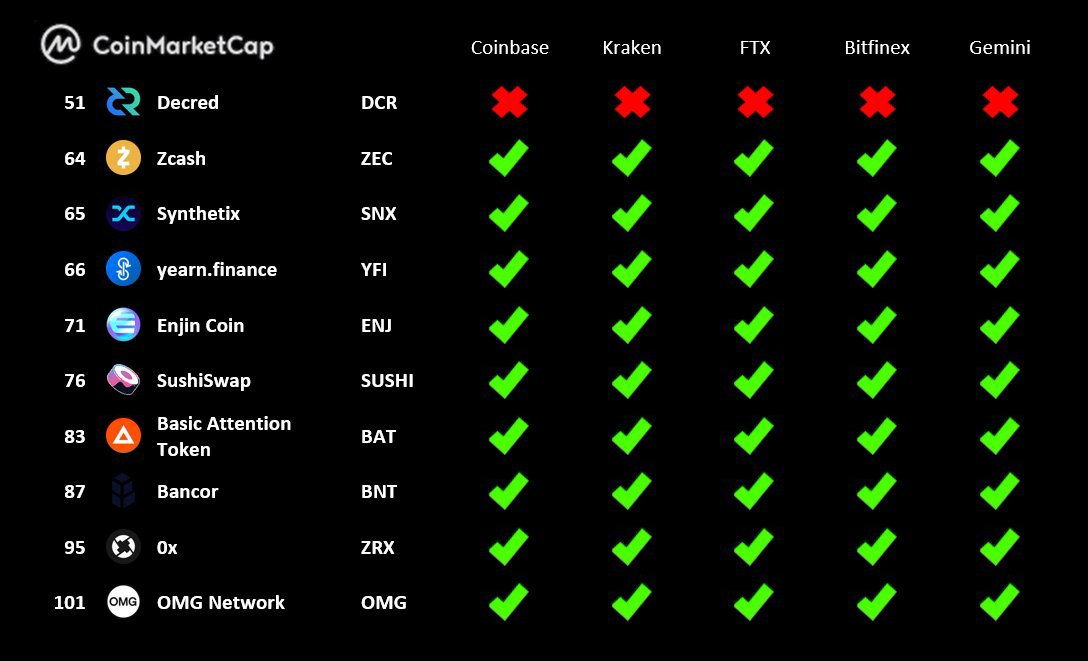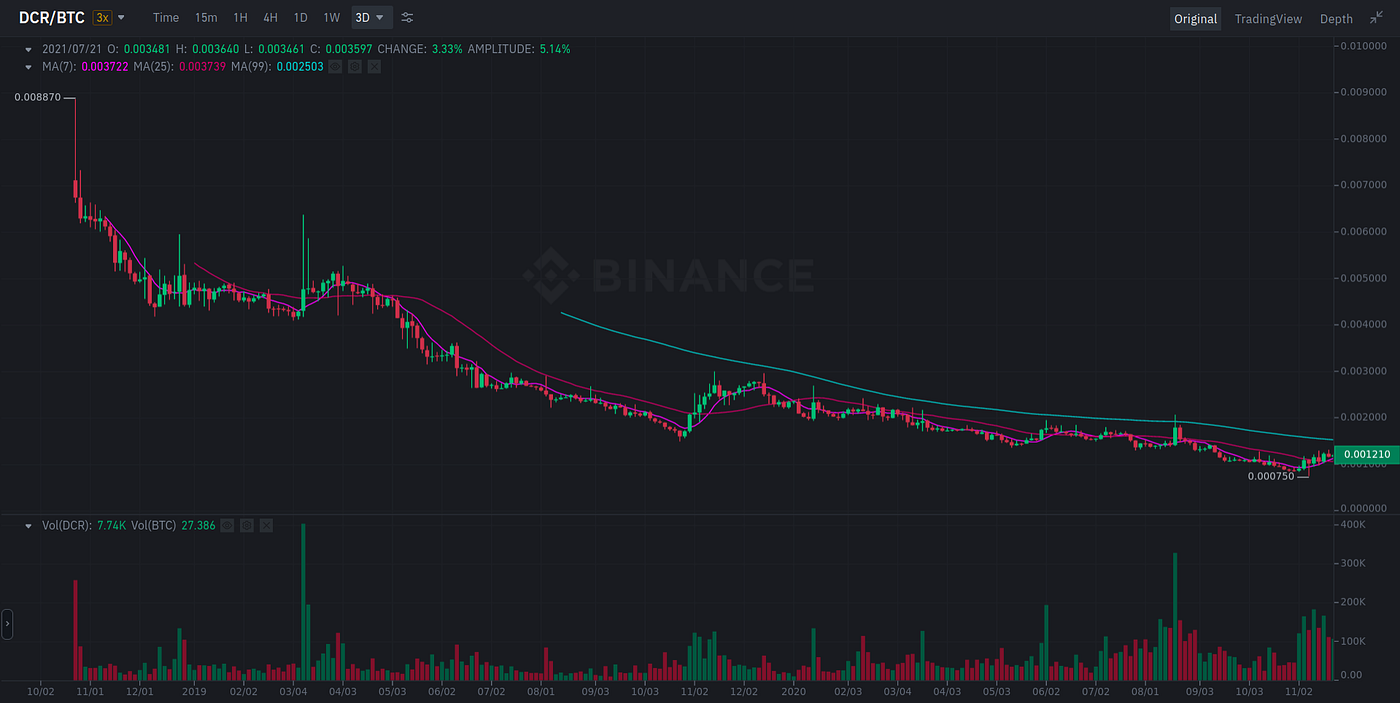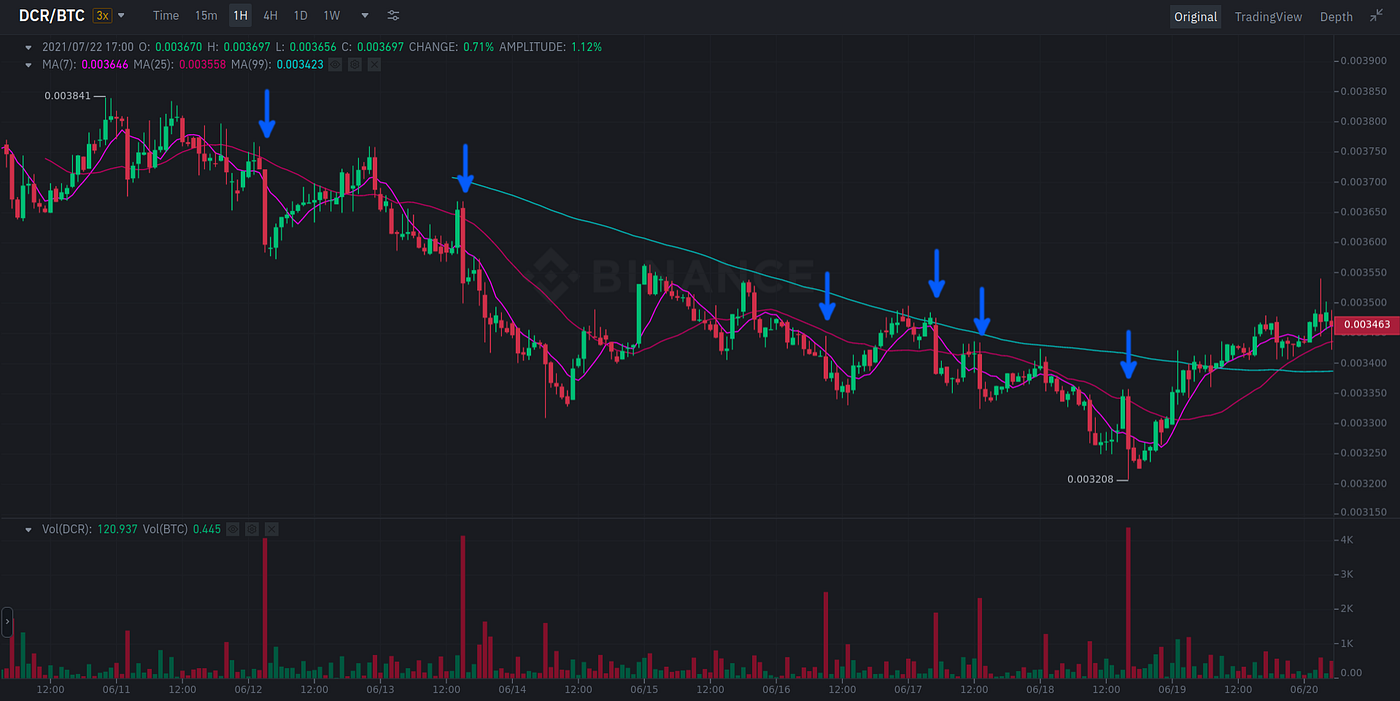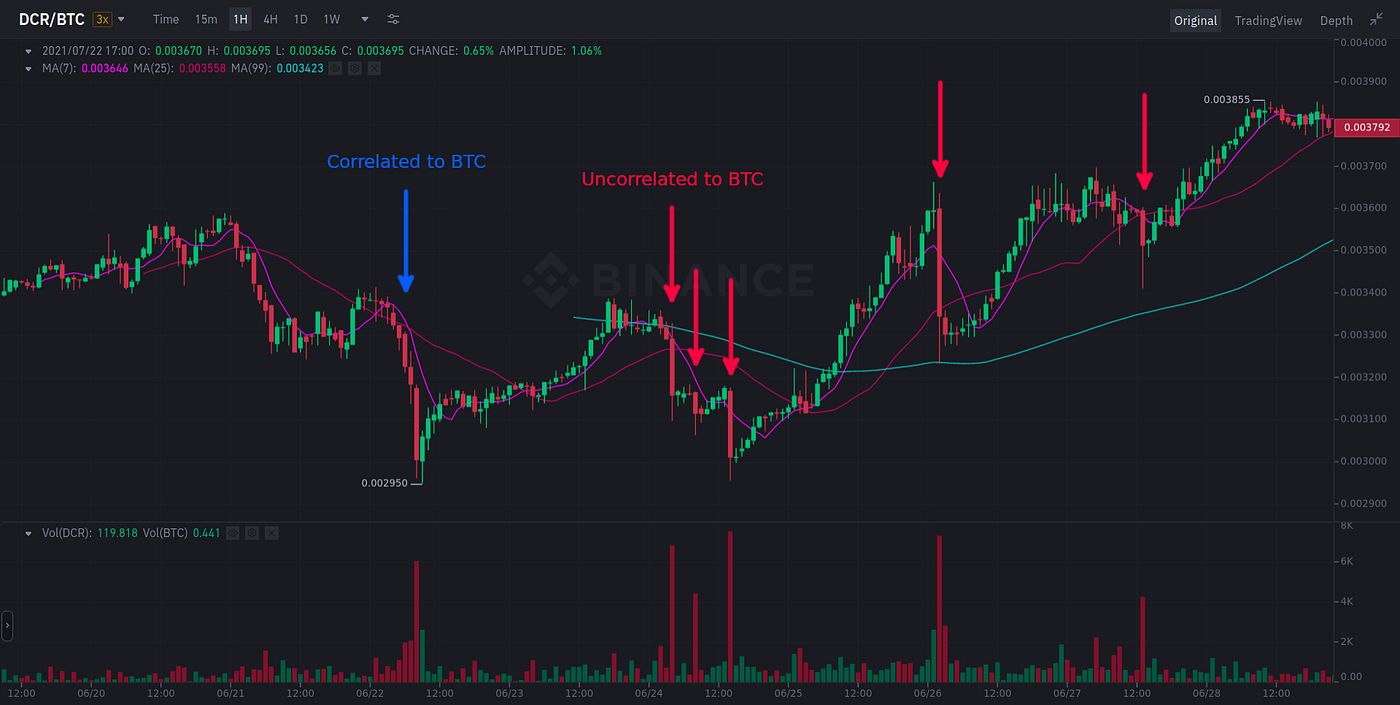The Suppressor Part 1: War of Attrition
The early days of the cryptocurrency industry embodied the wild west of free markets. An anything goes culture of market manipulation, exit scams, and behavior that would undoubtedly be illegal if brought into the spotlight.

By tacorevenge - Aug 6, 2021
The early days of the cryptocurrency industry embodied the wild west of free markets. An anything goes culture of market manipulation, exit scams, and behavior that would undoubtedly be illegal if brought into the spotlight. These tactics are as old as markets themselves, repackaged and rebranded whenever a new technology emerges that captures the imagination of the public. Narratives change, but the playbook remains the same.
For those that have made a habit of hanging out in the Decred trading circles, it doesn’t take long to encounter experienced traders confused about the unusual nature of Decred’s trading activity. Suspicions and hunches that something is off, but never quite being able to pinpoint exactly what. As it turns out, there may be more to these hunches than meets the eye.
DCRDEX Launch
The Decred project launched DCRDEX on October 21, 2020.

DCRDEX is a decentralized exchange that facilitates atomic swap trades between two cryptocurrencies. The initial launch included a DCR-BTC pair with plans to add more pairs in future releases. These trades are non-custodial, peer-to-peer trades that allow a person to trade DCR and BTC without needing to use a centralized exchange.
There are various reasons that one might want to avoid centralized
cryptocurrency exchanges. One of these reasons is security and privacy.
Centralized exchanges are required to adhere to stringent KYC/AML regulations that create honeypots for entities with malicious intent.
Imagine databases filled with KYC/AML and trade data were stolen. Attackers now have intimate details about your life. They know what you look like, where you live, and potentially how much cryptocurrency you own. You and your family could be in direct danger and you may not even know about it. These types of breaches could go undiscovered for years and this risk is not something to take lightly, particularly if you’re an early Bitcoiner with substantial cryptocurrency holdings.
The launch of DCRDEX was the first time that Bitcoin OGs had the ability to buy DCR using BTC in a way that protected their privacy and safety. This led to a premium arising for DCR that was purchased on DCRDEX, creating an arbitrage opportunity for anyone willing to buy DCR on centralized exchanges then sell that DCR on DCRDEX. It wasn’t long before the DCR community began to take notice. Binance, being the most liquid centralized exchange for DCR, emerged as the main source of liquidity to satisfy the demand.
A total of 3.123M DCR was purchased for 8,202 BTC on DCRDEX between October 2020 and July 2021.
This volume was not traders moving in and out of positions. This was DCR accumulation by long term holders. The DCR was purchased using previously dormant BTC, then moved into Decred’s staking and StakeShuffle privacy mixing. Decred’s staking participation rate during this period increased from 50.7% to 59.7% of circulating supply and the StakeShuffle mix rate increased from ~100k DCR/day to ~300k DCR/day.
For those that may doubt these claims, atomic swaps are verifiable on both the DCR and BTC blockchains. The dcrdata codebase even provides the tools necessary to run this verification. The swapscan tool scans the DCR blockchain for atomic swap transactions and the swapscan-btc tool does the same for the BTC blockchain. The swap transactions on the DCR chain can be correlated to the swap transactions on the BTC chain using the secret.
Examination of the data will reveal that the numbers I’ve reported and the claims I’ve made are indeed correct. The DCRDEX public API can also be used to pull the monthly volume numbers.

This data may seem shocking to members of the DCR community. One of the most common criticisms of DCR is that it’s not liquid enough to support large capital inflows. How is it possible that ~3 million DCR (~23% of the circulating supply) was able to be purchased and pulled off the market in just 10 months? This post is an attempt to document the strange series of events that have unfolded since the launch of the DCRDEX.
Exchange Listings
One important detail to keep in mind as you read this post is that it was not possible to trade DCR on margin, and thus not possible to short DCR on centralized exchanges, prior to December 2020. Binance added DCR as an isolated margin asset in December 2020, but the margin limits to date have not been large enough to have a meaningful impact.
Decred has been notoriously ignored by centralized exchanges throughout its history. In this case, the lack of exchange listings actually helps narrow down potential explanations for the behavior that is documented in this post.

Strange Patterns
The early arbitrage between DCRDEX and Binance was conducted manually by DCRDEX early adopters. More professional bots began to take over as awareness spread, but this period of manual trading was able to uncover some strange patterns in the DCR markets before the professional bots stepped in.
Arbitrage volume started to pick up in early November. Binance saw a 154% month-over-month volume increase on its DCR/BTC pair and trading activity quickly turned into an all out brawl. The bids coming out of DCRDEX seemed endless, but they were always met with fierce resistance from an unknown seller on Binance. It became apparent that someone was trying very hard to prevent a breakout. The seller went as far as market selling ~13k DCR to wipe out the order book and print a new low of 0.00075 DCR/BTC onto the chart, presumably to defend the multi year downtrend in the DCR/BTC price.

This was one of the first major indications that something was not quite right in the DCR markets. As time went on, more strange patterns emerged.
Dark Pool
When buying DCR on Binance, the amount of DCR shown on the sell side order book massively underrepresented the amount of DCR that was actually available for purchase.
If a user placed a buy order at market price or slightly above market price, the buy order would typically get filled instantly despite there being no sell side orders on the book prior to the fill. These instant fills consistently occurred at all times of day and for many months after the launch of DCRDEX.
The general ratio that emerged was 10x. You could typically purchase 10x the amount of DCR than what was actually shown on the order book. If there was 10k DCR in asks between 0.001 DCR/BTC and 0.00125 DCR/BTC then you could actually purchase roughly 100k DCR in that price range. This was not a hard rule, the ratio could fluctuate anywhere between 5x to 20x at times, but the underlying theme remained the same.
This behavior suggests that either Binance was operating a DCR dark pool or there was a bot that was programmed to operate in a similar fashion. The minimal latency that occurred during these fills hints at a dark pool.
It became clear that a single entity was behind these fills and that they
accounted for the vast majority of depth on both the public and dark pool order books. A bot was used to manage the depth and interplay between these order books, evidenced by a handful of occasions where the bot would go offline for a short period time and cause the order book to essentially disappear. It’s quite telling when 90% of the order book disappears then comes back online a few hours later.
This odd behavior did not go unnoticed by the DCR community. The entity behind these fills became known as The Suppressor amongst those who hung out in the DCR trading chats.
Slow Bleed
The Suppressor’s bot was used to both manage the order books and to actively push the price down.
Anytime volume dropped off, The Suppressor’s bot would kick on and start actively selling into DCR bids. These pushes were slow and steady, moving at a consistent rate, never pushing down too rapidly. The goal was to slowly bleed the price out.
If the bot encountered an uptick in volume it would turn itself off and wait for the next volume drop off. Buy pressure was defended against using the dark pool method discussed in the previous section. Once the buying subsided the bot would kick back on and continue its slow bleed. This behavior was present 24/7 and had likely been going on long before DCRDEX launched.
It got to the point where manual arbitragers could tell exactly when the bot would kick on or off and were even able to manipulate it at times to get it to perform a desired behavior. It’s not difficult to see the bot’s fingerprint in the charts.

Kill Momentum
Another technique that The Suppressor would employ is killing potential breakouts using large market sells.
Anytime DCR would really start running and building momentum for a large breakout, the momentum would be stopped in its tracks by large market sells. You can think of this as dumping a bucket of water on a fire. The size of these market sells would depend on the volume of the breakout, but The Suppressor was not afraid to throw tens of thousands of DCR at the problem.
A closer examination of the historical DCR chart reveals that this was a
common pattern. Any breakout attempts were met with sudden and severe resistance that created long top wicks before pushing the price back into its multi year downtrend.

Remember, it’s not possible to short DCR on any exchanges at this point so this behavior is not the result of typical short squeeze dynamics that you might see on other coins.
After watching one of these potential breakouts get killed in real-time during the fight between DCRDEX buyers and The Suppressor, it’s suspected that these market sells were manual intervention. The Suppressor is thought to let their bot operate autonomously using its slow bleed algorithm when market conditions are normal, then manually intervene when necessary in order to prevent breakouts.
Pile Drivers
As time went on, the tactics of The Suppressor began to change. The slow bleed strategy morphed into a much more focused strategy, presumably because their inventory was running low and they had to maximize the impact of their remaining DCR.
The new strategy that they began employing is what I’ll refer to as the pile driver strategy. A pile driver is a device used to drive piles (i.e. large columns) into soil. It works by raising a weight high into the air then dropping the weight onto the pile, focusing the force of the drop onto a single point in order to maximize the effectiveness of the impact.
Here’s an example. This dump occurred in the middle of the night (for the West) on a weekend and spiked volume 10x. If you were a profit motivated entity and wanted to sell 12k DCR, this is just about the worst way you could possibly do it. Why wait until lowest volume period of the week to sell your DCR? Why market sell your DCR all at once instead of spreading it out?

Maybe this was a one off occurrence? Maybe somebody needed the liquidity and was forced to sell despite the inopportune timing?
This doesn’t appear to be the case. The chart is littered with these pile driver dumps. The large, seemingly random volume spikes are the giveaway.

Maybe these dumps could be explained by BTC price action? It’s not uncommon for altcoins to sell off during volatile BTC moves as traders scramble to add collateral to their margin accounts or as their margin accounts get auto liquidated.
Again, this doesn’t appear to be the case. The majority of these dumps are uncorrelated to BTC price action and its pretty easy to spot the ones that are correlated. They look much more organic.

Upbit Pumps
A period that remains largely unexplained is the series of three consecutive pumps that emerged out of Upbit in December 2020.

Upbit does not normally account for a significant amount of DCR volume. These pumps came out of nowhere and were intense enough that Binance was forced to dip into one of its DCR cold storage wallets for the first time since listing DCR in order to satisfy the demand coming out of Upbit.
Funds moving from Binance to Upbit suggests the volume was real.
End Game
So what is The Suppressor’s end game?
To a casual observer, it probably looks like nothing out of the ordinary is occurring. This is part of what makes The Suppressor’s operation so insidious. They obfuscate what they’re doing so that their actions are interpreted as normal market activity. The reality is that this “normal market activity” is the result of very deliberate manipulation.
Once you start examining the data at a more granular level or start trading against the suppressor directly, particularly in the early days when they were bold and full of confidence, you quickly realize that something is very off.
Their initial game was to:
- Stack the sell side order book with dark pool orders. This gave the appearance of thin order books that discouraged large players from entering the market while also preventing upward price movement.
- Slowly bleed the price out. Actively push the price down during times of low volume.
- Prevent breakouts from occurring and momentum from building. Market sell large amounts of DCR into potential breakouts when necessary.
This was a war of attrition. Demoralize and demotivate the Decred stakeholders, contractors, and community. This has likely been going on for years and it wasn’t until the launch of DCRDEX that this behavior was uncovered.
The Suppressor’s tactics began to change as their inventory presumably depleted. They could no longer afford the strategy of stacking the dark pool order book and slowly bleeding the price out so they switched to the pile driver strategy, a strategy that can be interpreted as trying to inflict as much damage as possible with their remaining inventory.
While The Suppressor’s current activity is a shadow of what it once was, many questions still remain.
- How long has The Suppressor been operating in the DCR markets?
- Where did they get their inventory from?
- How much inventory do they have left?
- Who is behind The Suppressor?
- What is their motivation?
Cryptocurrencies are unique in the fact that most projects have a transparent base layer that can be analyzed by anyone that puts in the time. While Decred does have privacy features, these features were introduced in more recent years leaving ample on-chain data to analyze.
Tune in to Part 2 to explore what the on-chain analysis reveals…





Comments ()